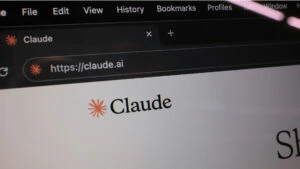Beiträge auf it-daily.net
Vollständige Büropräsenz
Während der Mutterkonzern Meta an der Drei-Tage-Regelung festhält, müssen Instagram-Mitarbeiter in den USA künftig wieder Vollzeit ins Büro.
Erklärung, Besipiele, Fakten
Hashfunktionen gehören zu den fundamentalen Bausteinen moderner IT. Ob beim Speichern von Passwörtern, bei der Blockchain-Technologie oder bei der Datenintegrität – Hashing ist allgegenwärtig. Doch was genau verbirgt sich hinter diesem Begriff, und warum ist er so wichtig?
Model Context Protocol als Schnittstelle
Microsoft testet Integration von KI-Anwendungen in den Datei-Explorer. Dienste wie Claude sollen künftig direkt auf lokale Dateien zugreifen können. Das zwar ohne Cloud-Upload, aber mit Zugriff aufs gesamte Dateisystem.
Kontextmenü wird schlanker und mehr
Microsoft beschleunigt den File Explorer durch Preloading und strafft das Kontextmenü. Die Neuerungen befinden sich in der Testphase und könnten Anfang 2026 ausgerollt werden.
Nach Angriffswelle
Oracle wurde offenbar Opfer der kritischen Sicherheitslücke in der hauseigenen E-Business Suite. Die Ransomware-Gruppe Cl0p nutzt die Schwachstelle bereits seit Monaten für großangelegte Angriffe auf zahlreiche Unternehmen und Organisationen. Jetzt behaupten sie die, den Software- und Cloud-Computing-Anbieter erfolgreich angegriffen zu haben.
KI-Ausfall
Die KI-Modelle Sonnet 4, Sonnet 4.5 und Haiku 4.5 von Anthropic, dem Entwickler hinter Claude AI, sind heute Morgen von signifikanten Störungen betroffen. Nutzer meldeten über diverse Kanäle Probleme beim Zugriff und der Nutzung des Dienstes. Ein Fix soll aber schon auf dem Weg sein.
Betrug
Cyberkriminelle missbrauchen IKEA, Kaufland und MediaMarkt für großangelegte Betrugsaktionen. Deutschland ist dabei das zweitwichtigstes Ziel nach den USA
Bitkom-Präsident fordert Mut
Die EU-Kommission hat ihren Vorschlag für den “Digitalen Omnibus” präsentiert. Der Digitalverband Bitkom sieht darin zwar erste Schritte in die richtige Richtung, vermisst aber grundlegende Reformen.
Halbes Internet lahmgelegt
Cloudflare hatte mit einer massiven Störung zu kämpfen. Viele Internetdienste wie X, ChatGPT und Co. waren über Stunden nicht mehr zu erreichen. Das Unternehmen gab nun eine Stellungnahme ab und erklärt, worin letztlich das Problem lag. Ein Cyberangriff war es jedenfalls nicht.
Ende einer Ära?
Apple-Chef Tim Cook könnte bereits im kommenden Jahr von seinem Posten zurücktreten. Dies berichtet die Financial Times unter Berufung auf informierte Kreise. Demnach hat der Verwaltungsrat bereits begonnen, einen Nachfolgeplan ernsthaft auszuarbeiten.
Heidi Klum auf Platz 10
Der Security-Anbieter McAfee hat seine aktuelle Deepfake-Deception-Liste vorgelegt. Sie zeigt, welche Prominenten und Influencer am häufigsten von Cyberkriminellen für Scams ausgenutzt werden. Taylor Swift führt die Promi-Liste an, bei den Influencern liegt die Streamerin Pokimane vorne.
Hoher Automatisierungsgrad
Der Claude Code-Entwickler Anthropic berichtet von ausgefeilten Angriffen auf Dutzende Organisationen weltweit. Die KI übernahm dabei offenbar den Großteil der Arbeit weitgehend autonom.














